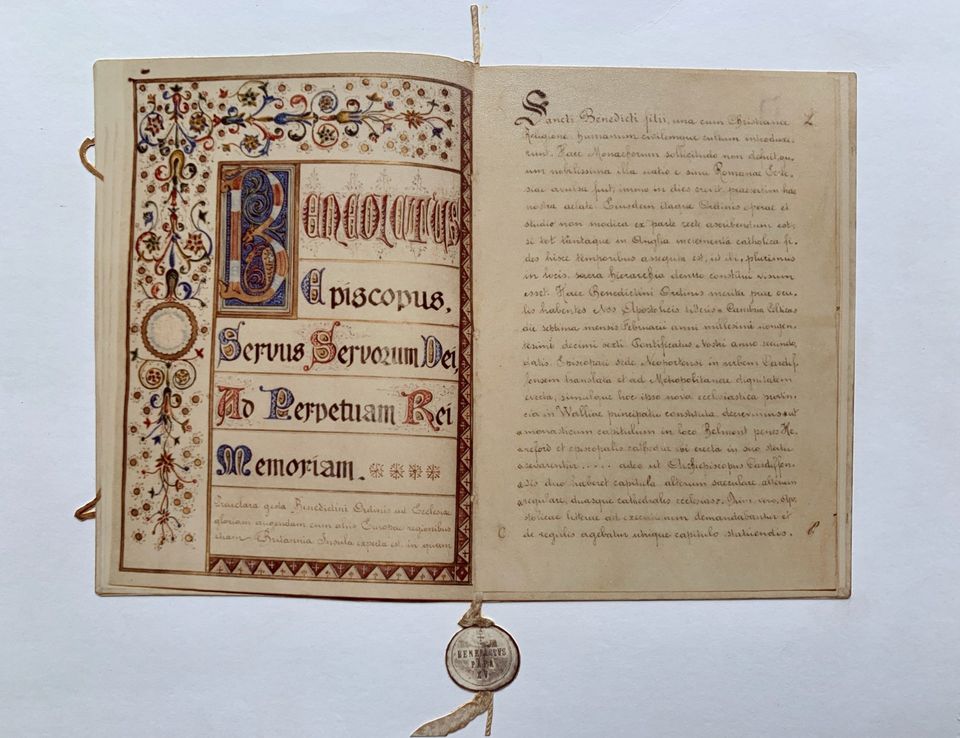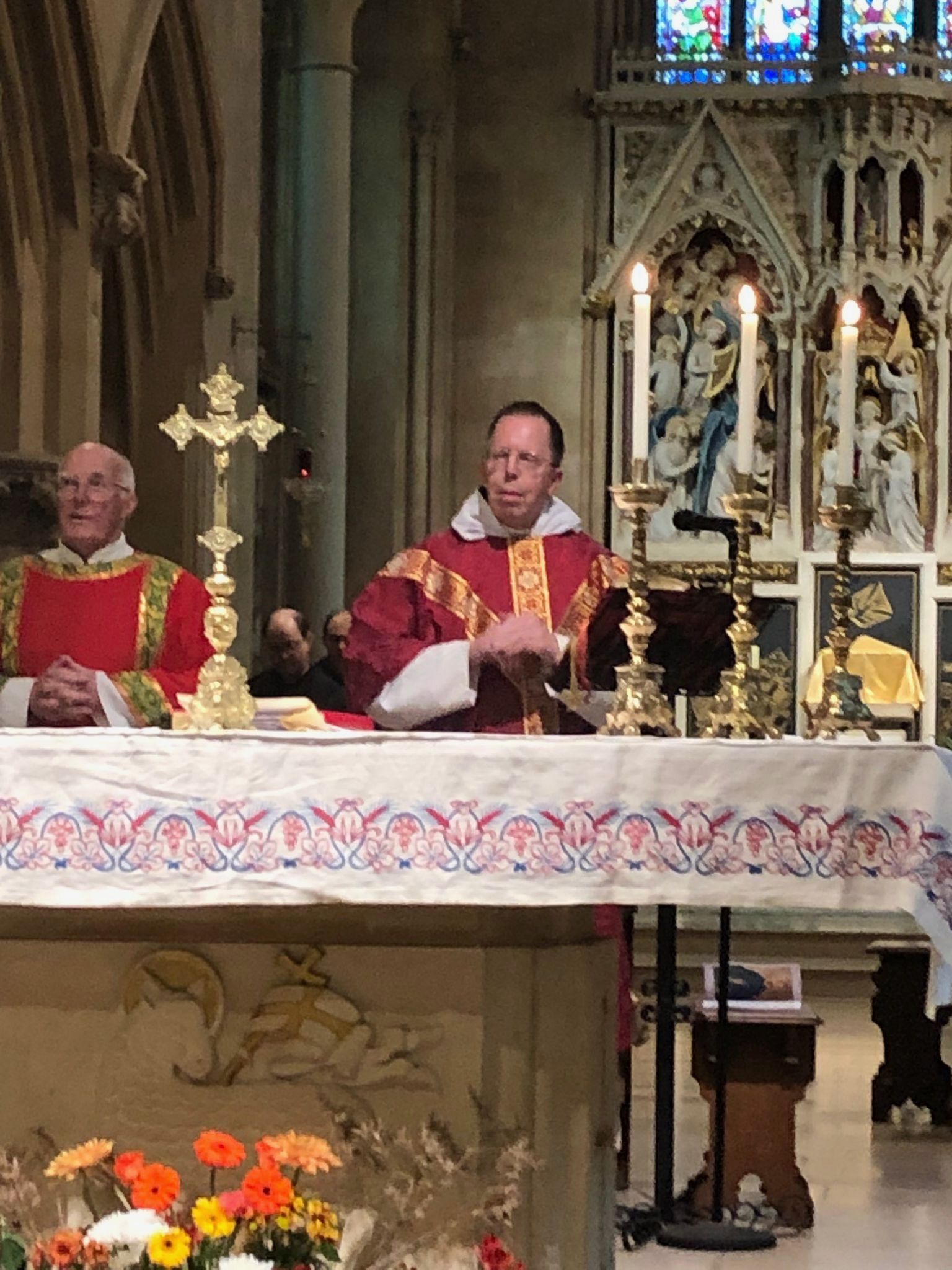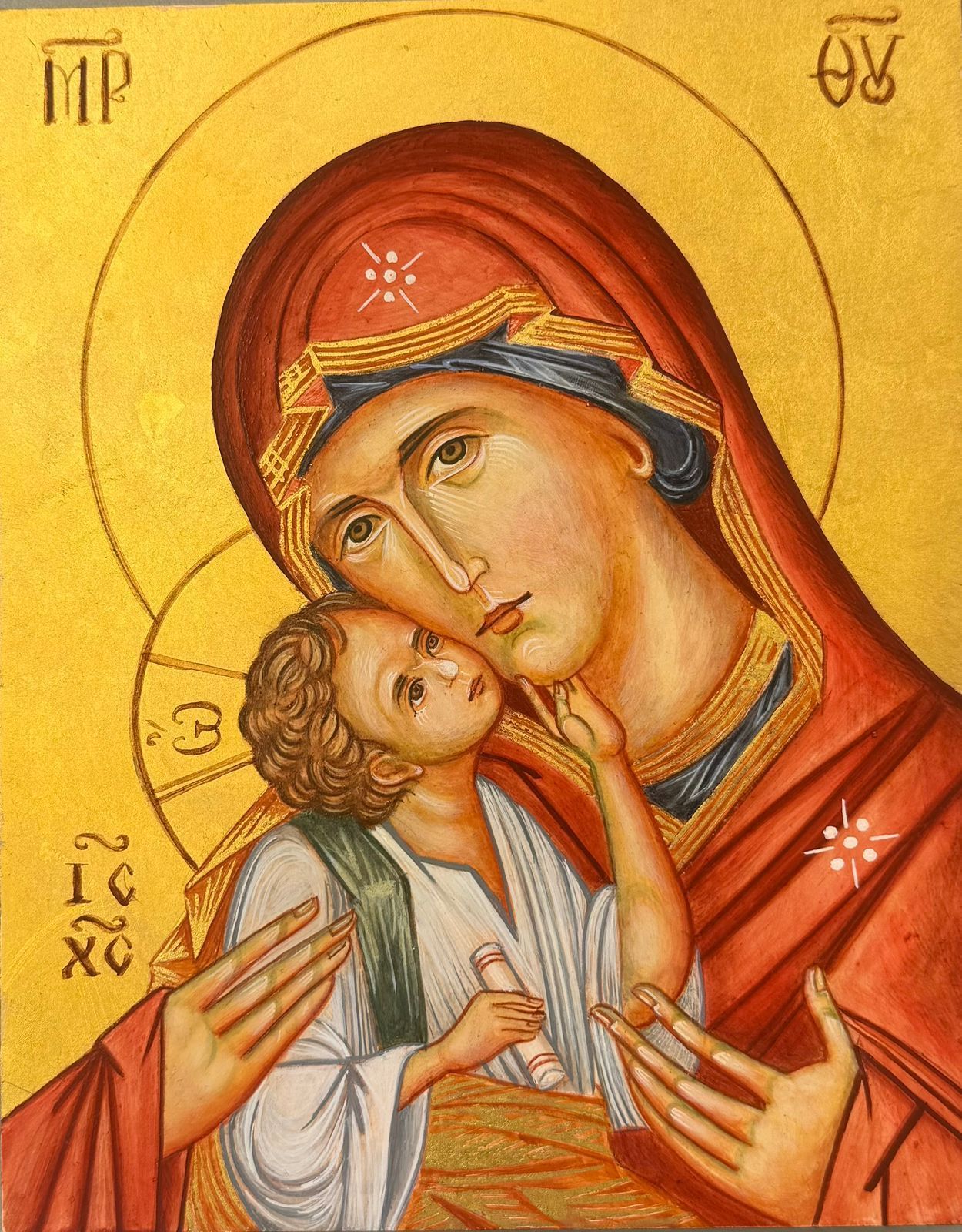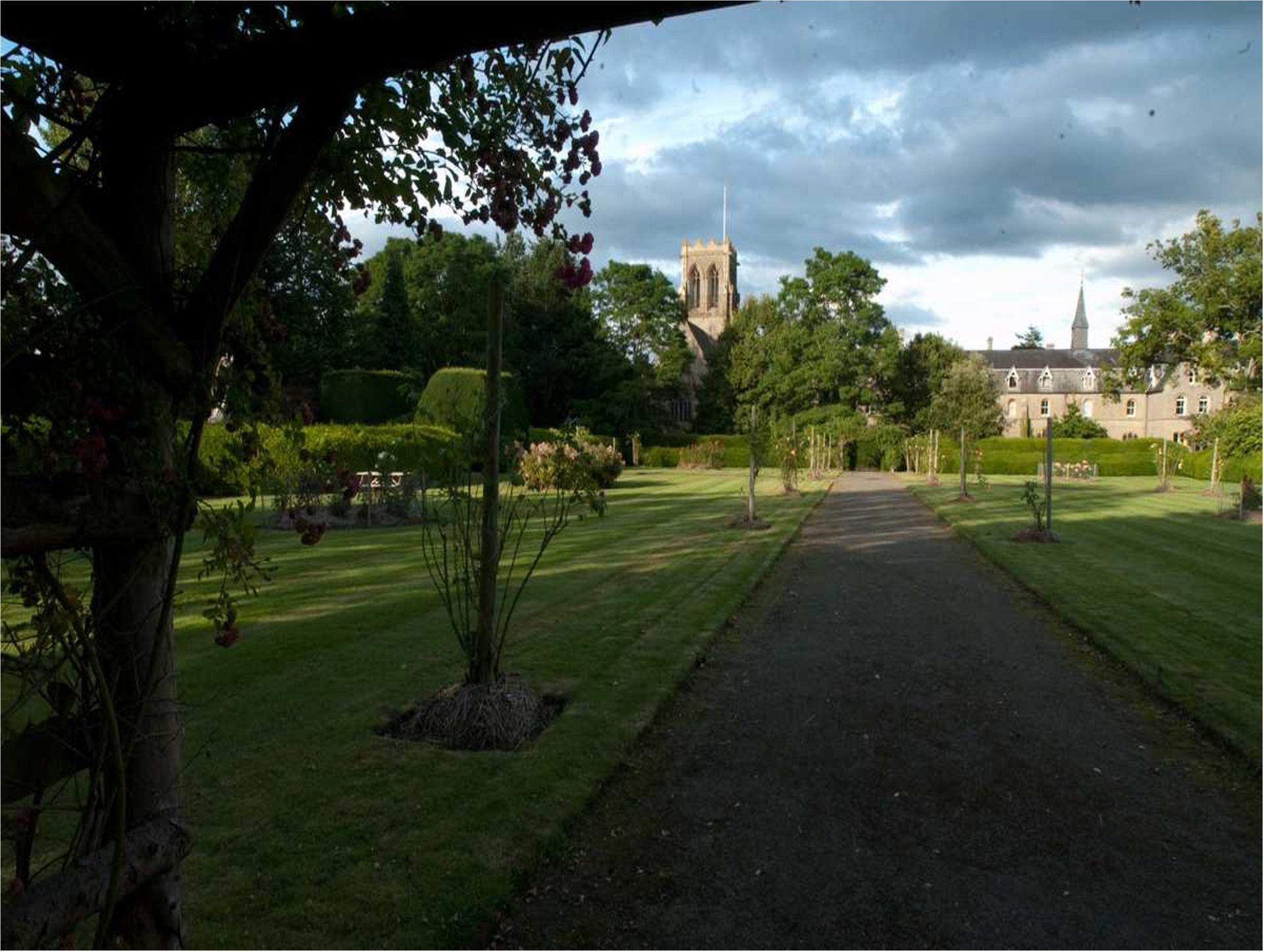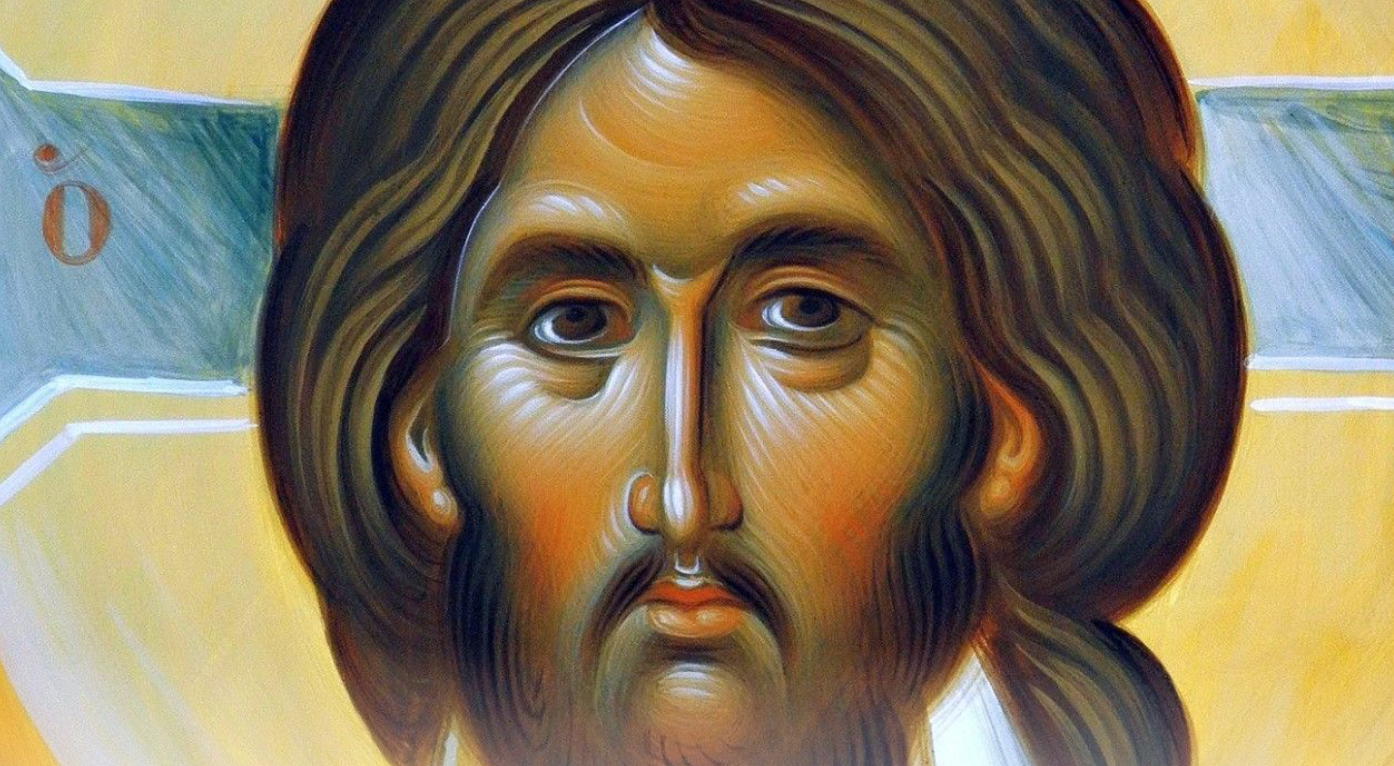We were able to announce some time ago that the Benedictine monastery at Belmont had been raised to the dignity of an Abbey. The Papal Bull effecting this has now been published. A translation of part of the Bull is given below. By its terms Belmont ceases "to be a Cathedral Priory and becomes an Abbey with all canonical rights and privileges."
The Benedictine monastery at Belmont was not, until recently, an independent monastery of the normal Benedictine type, nor was it a dependent priory, that is a house still subject to the abbey from which it was founded. It was built as a common novitiate and house of studies for the English Benedictine Congregation.
Then, by permission of the Holy See, its church became a pro-cathedral for the diocese of (at that time) Newport and Menevia. The community included a diocesan chapter of canons who were monks and whose Provost was the Superior of the monastery. He was appointed to the office of cathedral prior by the General Chapter for a period of years, He was not an abbot, though he enjoyed most of the privileges of an abbot, including the use of Pontificalia. This type of foundation was common in England before the Reformation, many of our old cathedrals having a Benedictine priory with community, chapter and prior attached.
Then, as in the modern case of Belmont, the church being a cathedral in which was set up the chair of the Bishop, the ruler of the monastery did not assume the title of Abbot, but was known as the cathedral prior. He did not receive the abbatial benediction, nor did he have a throne in the church. Except for these few points of difference, however, his duties and privileges were identical with those of an abbot. Belmont was an interesting revival in modern times of the once familiar cathedral priory.
But the march of time has again brought changes. Various abbeys of the English Benedictine Congregation having opened independent novitiates, a common house was no longer needed. The erection of the archdiocese of Cardiff with its Secular chapter, and St. David’s, Cardiff, as Metropolitan church, opened the way for the monks to relinquish the duty of maintaining a diocesan chapter. This renunciation has at last been accepted, and the Holy See, while desiring that the English Benedictines shall continue to be represented in the Hierarchy of England, has granted the petition of the monks and made Belmont a normal and independent Benedictine Abbey.

